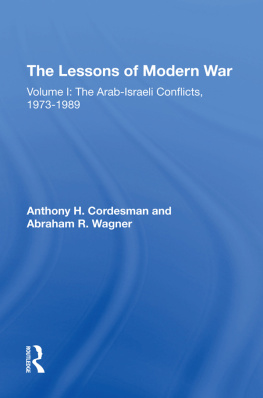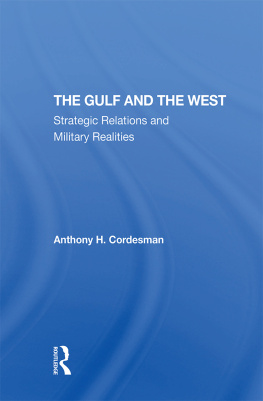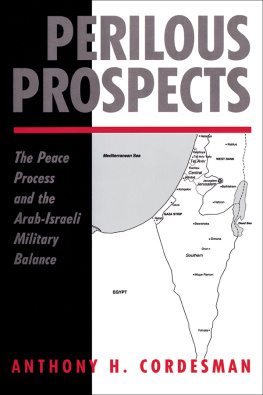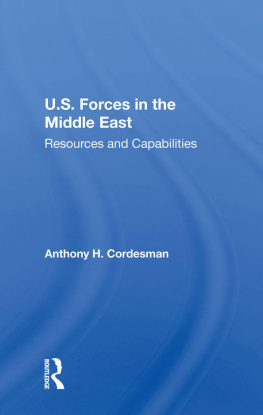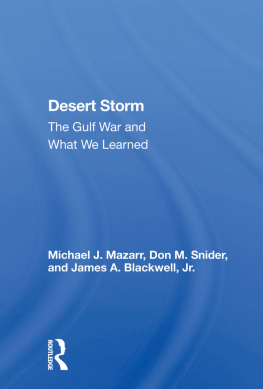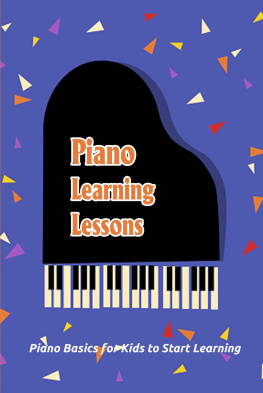First published 1990 by Westview Press
Published 2019 by Routledge
52 Vanderbilt Avenue, New York, NY 10017
2 Park Square, Milton Park, Abingdon, Oxon OX14 4RN
Routledge is an imprint of the Taylor & Francis Group, an informa business
Copyright 1990 by Anthony H. Cordesman
All rights reserved. No part of this book may be reprinted or reproduced or utilised in any form or by any electronic, mechanical, or other means, now known or hereafter invented, including photocopying and recording, or in any information storage or retrieval system, without permission in writing from the publishers.
Notice:
Product or corporate names may be trademarks or registered trademarks, and are used only for identification and explanation without intent to infringe.
Library of Congress Cataloging-in-Publication Data
Cordesman, Anthony H.
The lessons of modern war / Anthony H. Cordesman and Abraham R.
Wagner.
p. cm.
Includes bibliographical references.
Contents: v. 1. The ArabIsraeli conflicts, 19731989.
1. Military art and scienceHistory20th century. 2. Military
history. Modern20th century. I. Title.
U42.C59 1990
355.48dc20
89-16631
CIP
British Library Cataloguing in Publication Data
Cordesman, Anthony H.
The lessons of modern war.
Vol. 1, The Arab-Israeli conflicts, 19731989
1. Warfare
I. Title II. Wagner, Abraham R.
355.02
ISBN 13: 978-0-367-29351-2 (hbk)
This is the first in a series of three volumes that the authors have written with the assistance of Raymond J. Picquet, W. Andrew Terril, and Carol K. Wagner and with the support of the Royal United Services Institute. These volumes cover five major wars: the Arab-Israeli conflict of October 1973, the Israeli invasion of Lebanon in 1982, the Iran-Iraq War, the Soviet invasion of Afghanistan, and the Falklands conflict with Argentina. Volume I covers the lessons of the Arab-Israeli arms race between 1973 and 1989 and of the Arab-Israeli conflicts of 1973 and 1982. Volume II in this series covers the Iran-Iraq War. Volume III covers the Falklands and Afghan conflicts and provides the general conclusions of the study.
Each of the three volumes is written as an independent work, but the analysis of the wars in question is standardized as much as possible. The analysis of major conflicts is divided into sections that analyze the forces involved, the history of the conflict, key aspects of the operational art of war, and the impact of major types of forces and weapons. Where the source data permit, these sections are as comparable as possible.
The analysis in each volume focuses on military events and lessons and treats the politics of each conflict only to the extent necessary to understand military events. Only summary histories are provided of given battles, except where a description of military action will help the reader understand the broader lessons involved. Where possible, key events and data are described in a way that will allow the reader to draw his or her own conclusions. A deliberate effort has been made to avoid oversimplifying the complex nature of modern war.
The sources and methods used in each volume are described at its end, and a research bibliography is provided for each conflict. Frequent use is made of tables and charts to allow comparisons of forces, portray force shifts over time, and show the key performance features of major weapons. In most cases, the data are shown as provided in the original source rather than standardized or altered to eliminate minor conflicts. This is done to allow the reader to see the original data on which the analyses are based.
Anthony H. Cordesman

